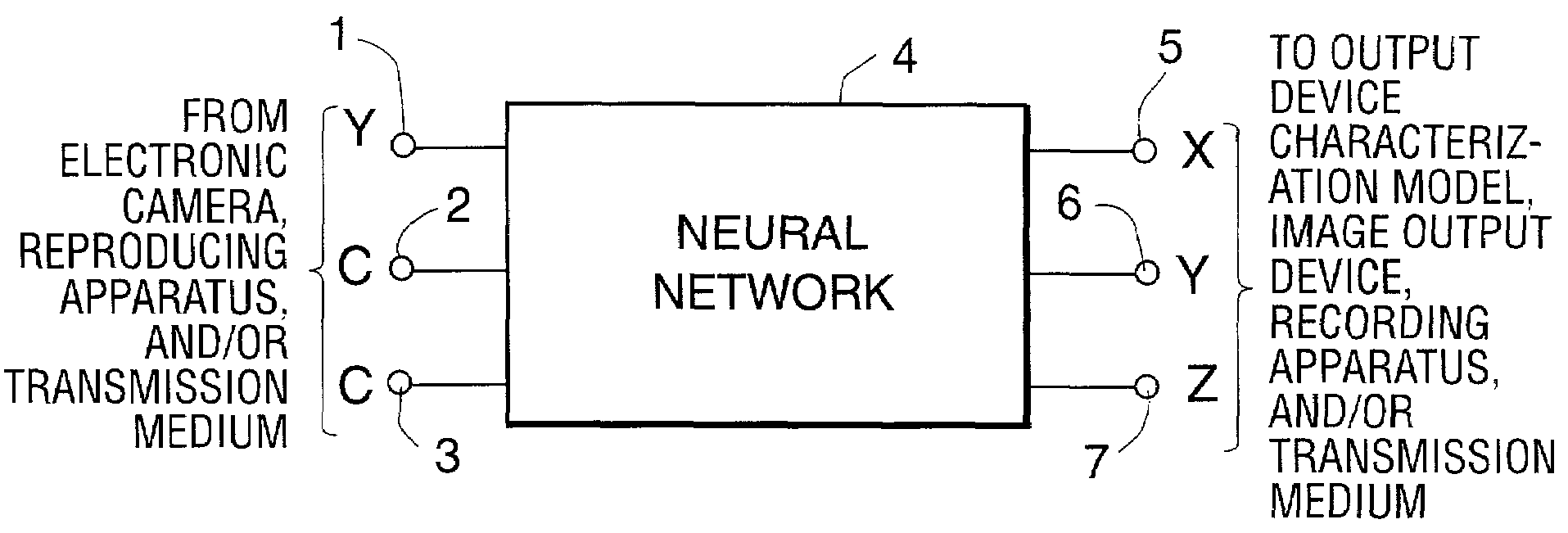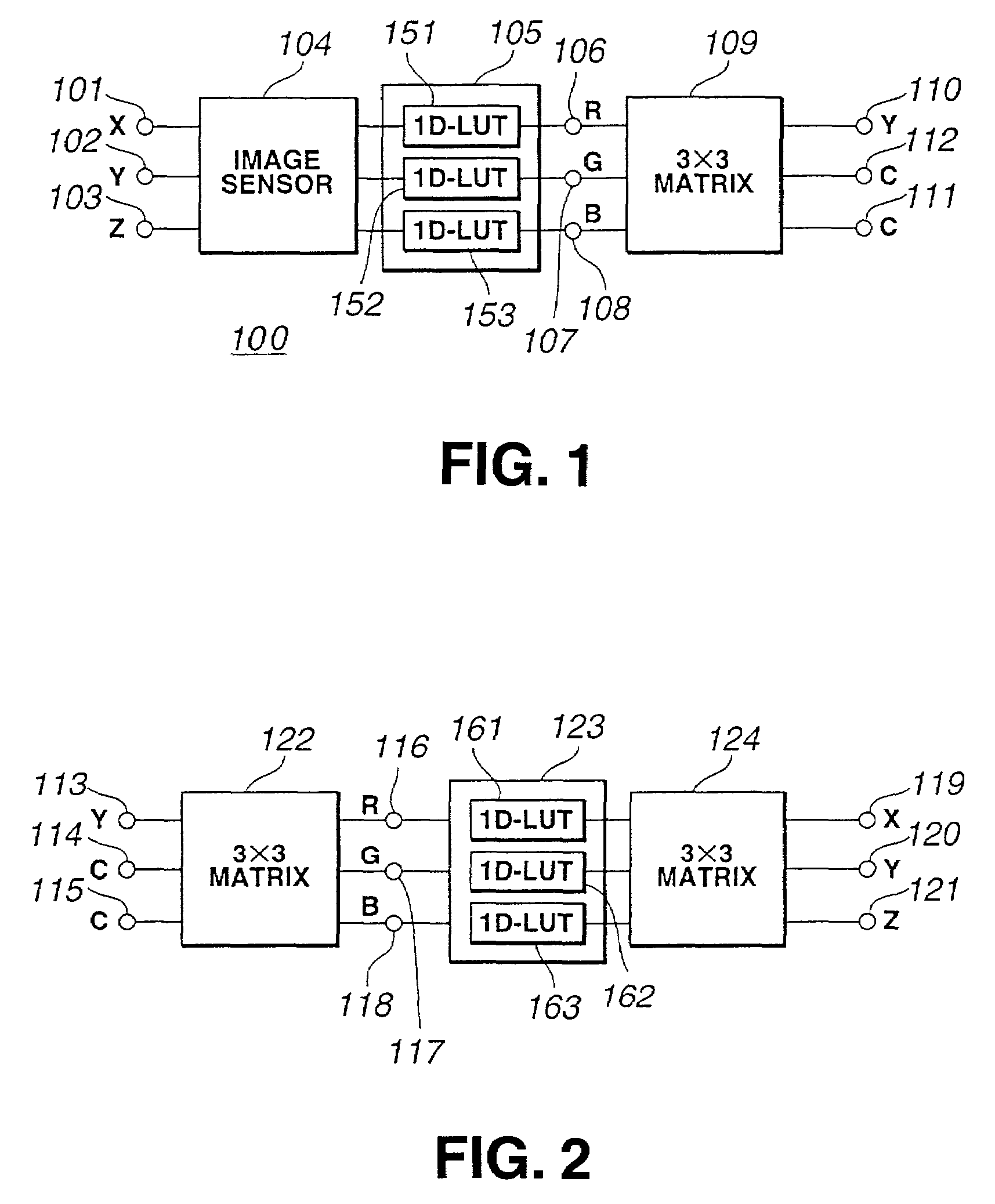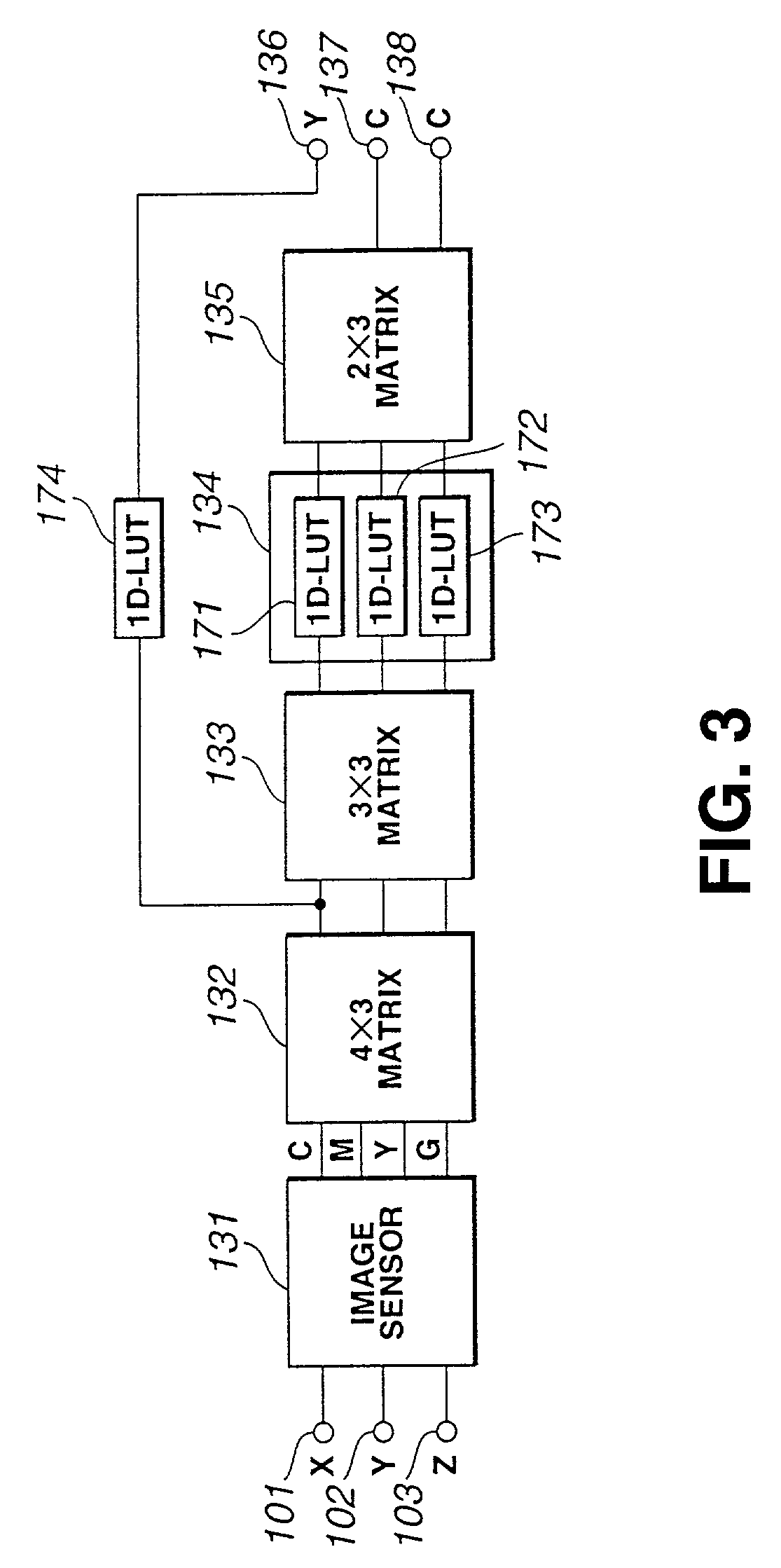Methods and apparatus for color device characterization
a color device and color technology, applied in the field of color correction of images, can solve the problems of inability to perform accurate color correction, inability to perform color correction, and no longer be a reverse model, and achieve the effect of higher color correction accuracy of images
- Summary
- Abstract
- Description
- Claims
- Application Information
AI Technical Summary
Benefits of technology
Problems solved by technology
Method used
Image
Examples
Embodiment Construction
[0055]To solve the problems described above, a neural network (e.g., a MLP) or a CANFIS neuro-fuzzy model is utilized. Although the invention is applicable to both “device specific” and “device independent” approaches, the embodiments disclosed herein are described herein in relation to device independent color correction. It is to be understood that a MLP is just one type of well known neural network. Furthermore, where a neural network is specified in herein, a MLP or other type of neural network may be utilized.
A Single-Illuminant Color Correction Using an MLP.
[0056]As discussed above, when a color correction using a TRC-matrix model (FIG. 1) cannot be accurate even under one fixed known illuminant, the cause is likely to be non-ideality, nonlinearity or structural complexity in the electronic camera. A neural network as shown in FIG. 4A or a MLP model as shown in FIG. 4B can be used instead of the TRC-matrix model to improve the correction accuracy. In FIG. 4A any neural network...
PUM
 Login to View More
Login to View More Abstract
Description
Claims
Application Information
 Login to View More
Login to View More - R&D
- Intellectual Property
- Life Sciences
- Materials
- Tech Scout
- Unparalleled Data Quality
- Higher Quality Content
- 60% Fewer Hallucinations
Browse by: Latest US Patents, China's latest patents, Technical Efficacy Thesaurus, Application Domain, Technology Topic, Popular Technical Reports.
© 2025 PatSnap. All rights reserved.Legal|Privacy policy|Modern Slavery Act Transparency Statement|Sitemap|About US| Contact US: help@patsnap.com



